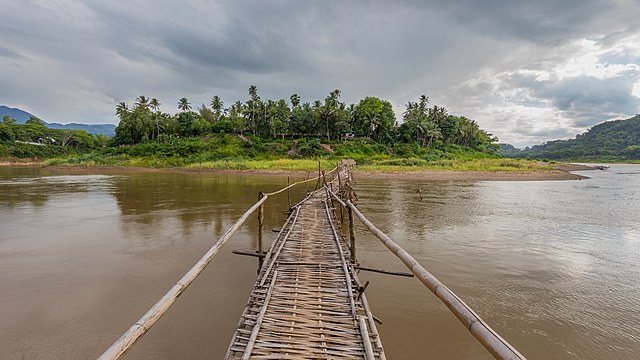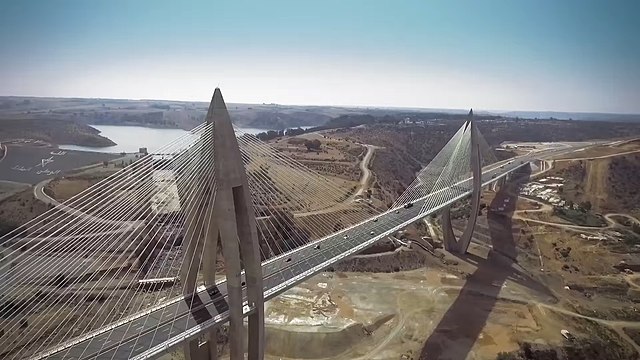A footbridge is a bridge designed solely for pedestrians. While the primary meaning for a bridge is a structure which links "two points at a height above the ground", a footbridge can also be a lower structure, such as a boardwalk, that enables pedestrians to cross wet, fragile, or marshy land. Bridges range from stepping stones–possibly the earliest man-made structure to "bridge" water–to elaborate steel structures. Another early bridge would have been simply a fallen tree. In some cases a footbridge can be both functional and artistic.
Women heading to market across a footbridge in Nahulingo, El Salvador
A footbridge in Shaharah District, Yemen
Stepping stones, across the River Rothay, in the Lake District, England
A footbridge seen in Walbridge Park, Toledo, Ohio, 1895
A bridge is a structure built to span a physical obstacle without blocking the way underneath. It is constructed for the purpose of providing passage over the obstacle, which is usually something that is otherwise difficult or impossible to cross. There are many different designs of bridges, each serving a particular purpose and applicable to different situations. Designs of bridges vary depending on factors such as the function of the bridge, the nature of the terrain where the bridge is constructed and anchored, the material used to make it, and the funds available to build it.
A temporary wooden footbridge leading to Luang Prabang in Laos
The covered bridge in West Montrose, Ontario, Canada
The Albertus L. Meyers Bridge in Allentown, Pennsylvania, U.S., "one of the earliest surviving examples of monumental, reinforced concrete construction," according to the American Society of Civil Engineers.
Mohammed VI Bridge in Morocco








